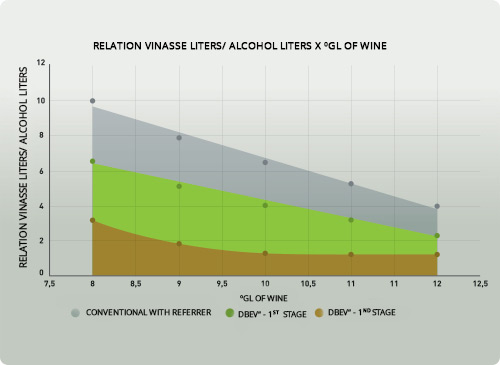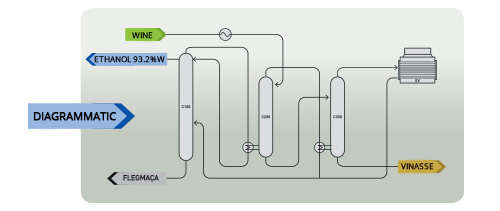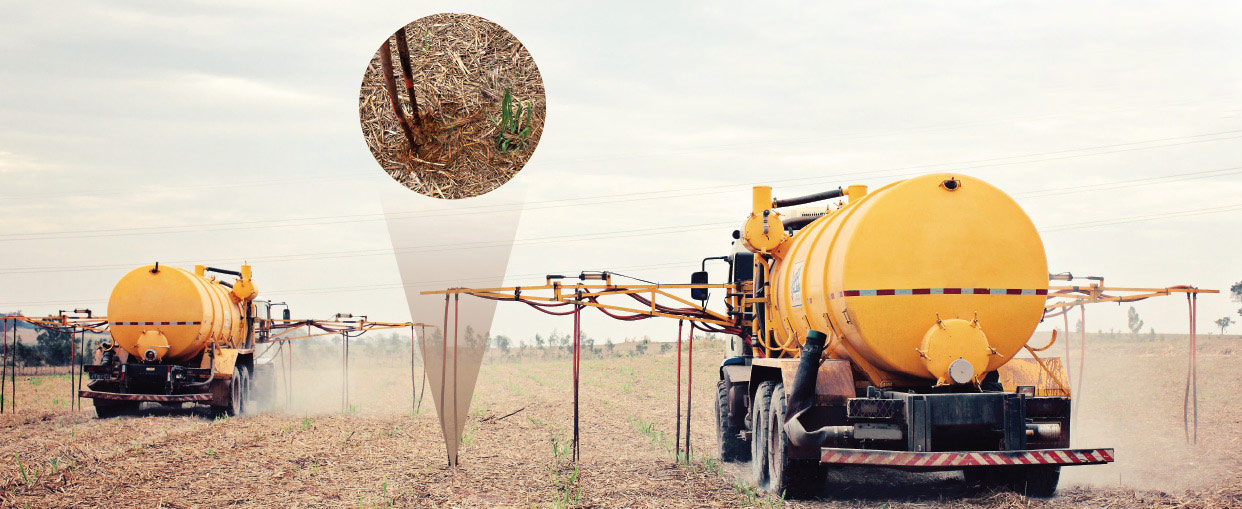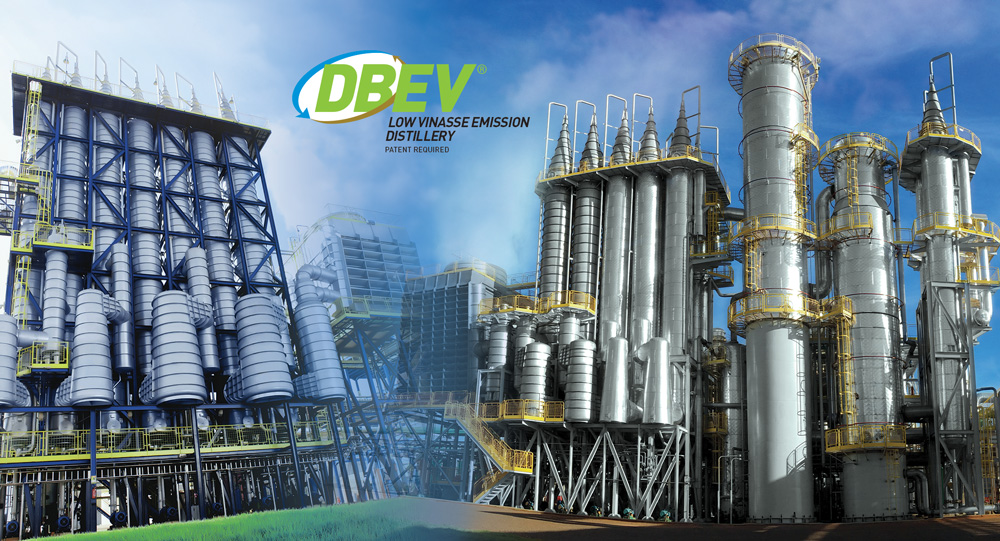DBEV® • LOW VINASSE EMISSION DISTILLERY
Description
Due to the expertise gained over the years, the partners Citrotec® and Etech developed a Low Vinasse Emission Distillery, DBEV®. It consists of a distillation equipment with unique internal columns, distilling in multiple effects, operating under pressure and vacuum.
Coupled to ECOVIN® Vinasse Concentrators under the principle of Turbulent Descending Mist, working as ethanol Reboilers and Condensers, concentrating vinasse. This arrangement allows the full use of the internal energy of the distillation process in multiple effects, from the pressure to the vacuum.
DBEV® is an unprecedented process with patent required, it is a major evolution of conventional distillation systems and the well-known vinasse concentration evaporator, ECOVINJL®.
Designed in two versions (1st stage and 2nd stage), it allows the investment in the vinasse concentration to be made in stages, being more economical than the current process (Distillery + EcovinJL®), the DBEV® system already provides a LITERS OF VINASSE / LITERS OF ALCOHOL which is, at least, half of the value obtained in a conventional atmospheric equipment, as shown in the graph.


Uses of concentrated vinasse
The concentrated vinasse is used for various purposes. Its main use is a liquid organic fertilizer. Due to the high concentration of potassium (K2O) providing reduction of costs in transportation, due to the reduction of trips and costs, In addition to allowing precise dosage of potassium in the growing area.

Agronomic Benefits:
• Rationalization of K and equalization of its content in the soil with a level of greater agronomic result, allowing the use of precision agriculture.
• Recycling of K in 100% of the cultivated area.
• Possibility of formulating a single fertilizer for stubble (enrichment with N, P2O5 and micronutrients).
• Reduction of the costs of operation of stubble.
• Increase of productivity in the order of 5.0 - 8.0 t / ha.
• Rationalization of transport and application logistics.
• Environmental suitability to the process.
• Stable fly proliferation control.
• Biological fertilization.
Specialists Comment: Stable Fly
• The insect multiplies in the remains of the sugar cane irrigated with fresh vinasse and in the vinasse channels that are eliminated with the concentration.
• This insect finds a place to reproduce and feed on the fresh vinasse used for fertigate.
• They cause great losses for agriculture.
• The region with the greatest proliferation is surrounded by sugar cane, irrigated with fresh vinasse due to its puddling.
• The application of concentrated vinasse is the most suitable for the control of the fly.



